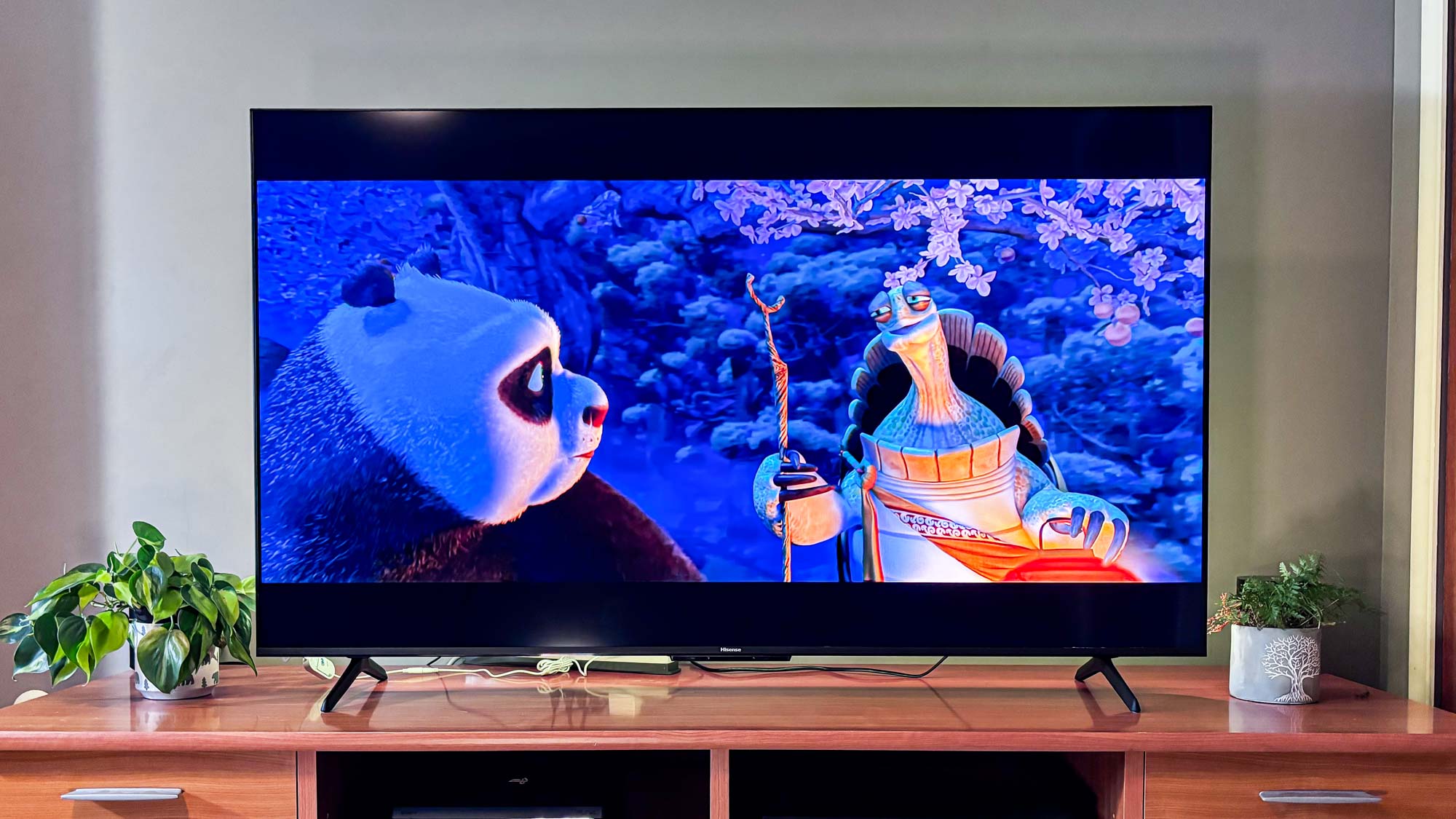
Price: $499.99
Screen size: 65-inch
Model: 65U6K
Resolution: 3,840x2,160
HDR: HDR10, HDR10+, Dolby Vision, HLG
Refresh Rate: 60Hz
Ports: 4 HDMI 2.0, 2 USB
Audio: 20W
Smart TV Software: Google TV
Size (without stand): 57.1 x 33.1 x 3.1 inches
Weight (without stand): 43.1 lbs.
Given its position in the Hisense lineup, you’d be forgiven for thinking that the Hisense U6 (more formally called the Hisense U6K to denote its 2023 release date) would be a poor performer. It sits at the bottom of Hisense’s ULED lineup below the award-winning Hisense U8K and Hisense U7K, after all. And yet, this is one of the best budget TVs of the year.
What helps elevate the Hisense U6 from merely average to one of the top performers is Hisense’s implementation of Mini-LED that enables better contrast with above-par black levels and a quantum dot for color saturation. Tack on Google TV and VRR support for consoles, and you’re getting a lot of the best features at a much lower price point.
It's not all bright spots for the Hisense U6, however, as some slight fuzziness can appear in HD content like Sunday Night Football and the native refresh rate of 60Hz is a problem for gamers looking to maximize the frame rates of their favorite games.
Small issues aside, the U6 delivers far more than what I’d expect to see from a sub-$500 TV.
Hisense U6K review: Price and availability
The Hisense U6 was released in the middle part of 2023 and replaces last year’s Hisense U6H. Despite several major improvements to the design of the TV, the Hisense U6 is still incredibly affordable with almost all of its screen sizes being available for under $500.
The different sizes of Hisense U6, and their prices, are as follows:
- Hisense 55U6K (55-inch): $449.99 | $349 on sale
- Hisense 65U6K (65-inch): $599.99 | $499 on sale
- Hisense 75U6K (75-inch): $799.99 | $649 on sale
For our Hisense U6 ULED review, Tom’s Guide was provided with a 65-inch model, but we expect performance to be nearly identical at every screen size. Not sure which one to buy? Check out our ‘What size TV should you buy?’ guide.
Hisense U6K review: Design
The Hisense U6 does little to hide its budget aesthetic — its legs are plastic and 3.1 inches deep, it doesn’t sit exactly flat on the wall. The LG G3 OLED this is not. However, that’s not to say it’s an ugly TV. Its bezel trim is fairly minimal and it all but disappears when you’re actually watching something on the TV.
Like last year’s model, there’s a physical switch for turning on or off the integrated far-field microphone just beneath the center of the screen near the IR sensor. You should be careful covering this area with a soundbar, so try to buy a lower-profile model if that’s something you’re considering.
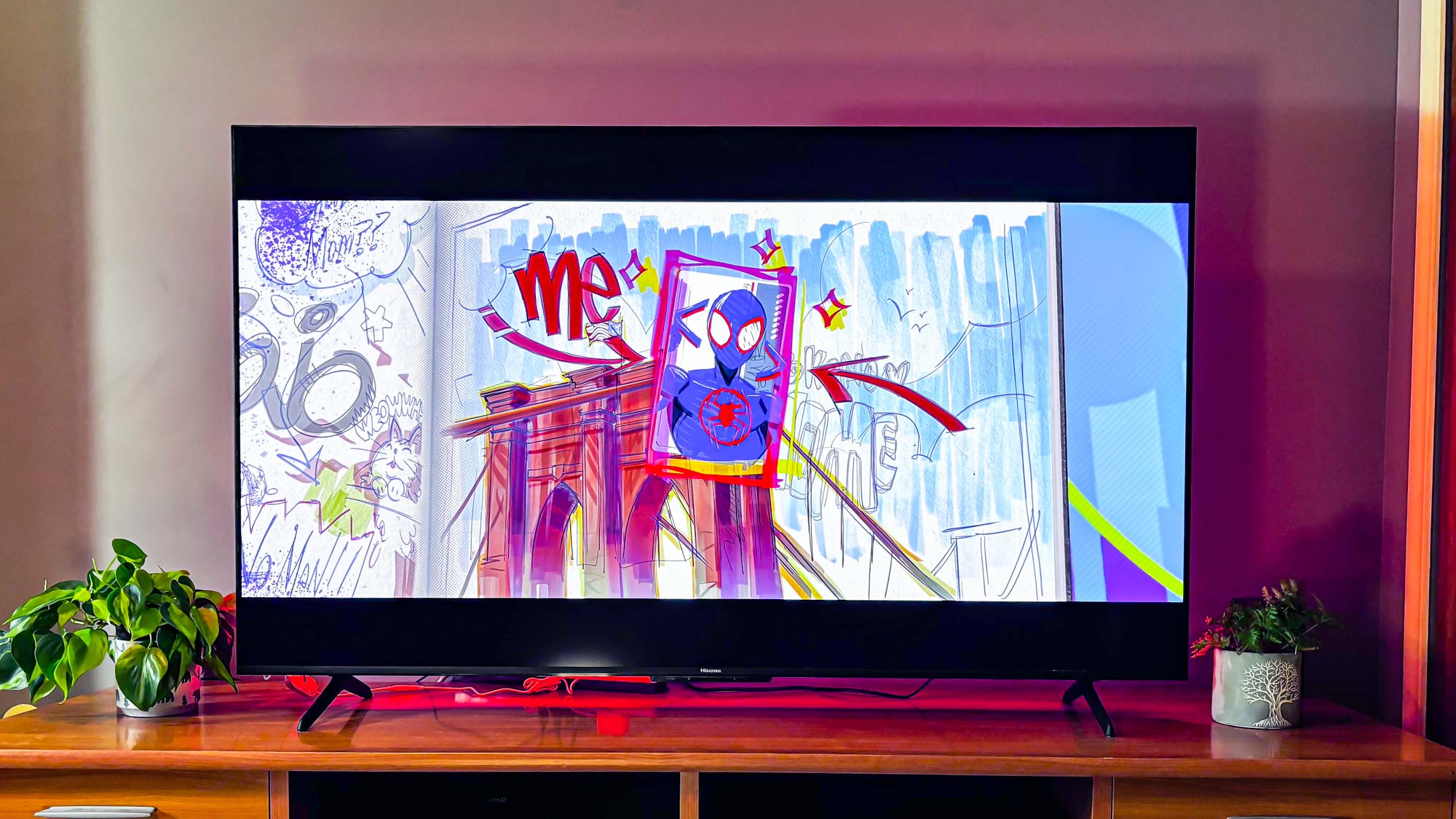
In terms of dimensions, the 65-inch model measures in at 57.1 x 33.1 x 3.1 inches (W x H x D) and weighs 43.1 pounds. You’ll probably want a second set of hands to get it setup, but it’s light enough that you can move it around by yourself should the need arise.
One nice feature that Hisense added this year is the ability to change where the feet are located — there’s a wider stance that you can use to give the TV some more stability or a shorter stance if you need the legs to fit on a smaller piece of furniture.
Hisense U6K review: Ports
Hisense doesn’t skimp on the ports with the U6. The 65-inch model offers three HDMI 2.0b ports alongside two USB ports for powering streaming devices, a coaxial input for an antenna, Digital Optical Audio Out and a 3.5mm audio jack. There’s also a port for composite video with an adapter, however one is not included in the box.
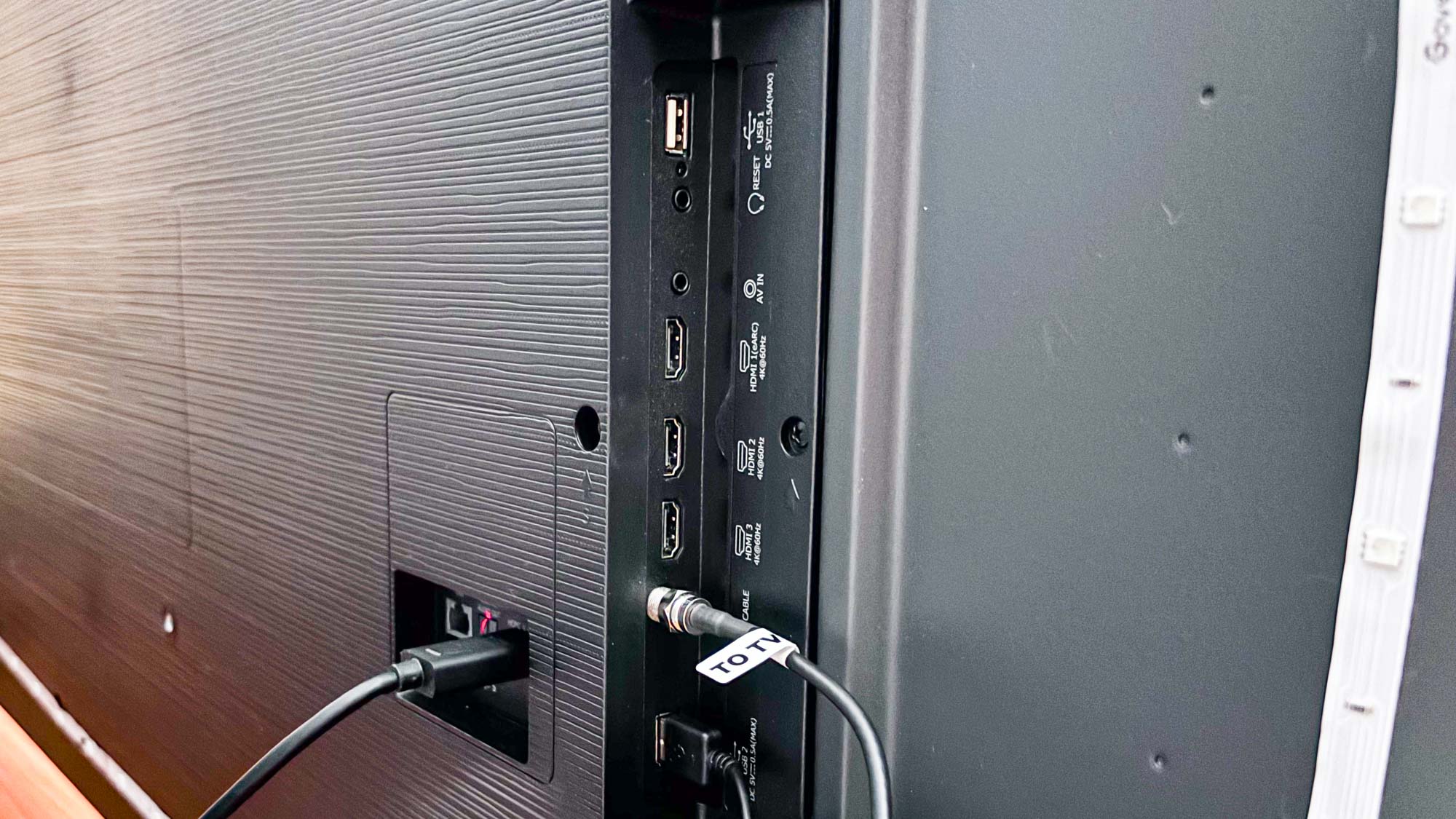
As mentioned before, the Hisense U6 only has a native refresh rate of 60Hz. That means that HDMI 2.1 ports, while helpful for some advanced features, won’t do much here.
The good news is that, thanks to the eARC port, the Hisense U6 can pass Dolby Atmos signal to a soundbar or AV receiver, though 7.1 DTS:X and DTS-HD MA are off the table.
Hisense U6K review: Performance
While more expensive models like the LG C3 OLED are like swiss army knives capable of handling any kind of content, the Hisense U6 is like a scalpel, finely tuned for optimal HDR movie watching and gaming.
To that end, all the HDR content I watched looked incredible: Both Spider-Man: Across the Spider-Verse’s color-packed scenes and the intense blaster firefights depicted in Ahsoka on Disney Plus dazzled me with their vibrant hues. Watching them back-to-back made it feel like I was watching a TV that cost twice as much as the U6.
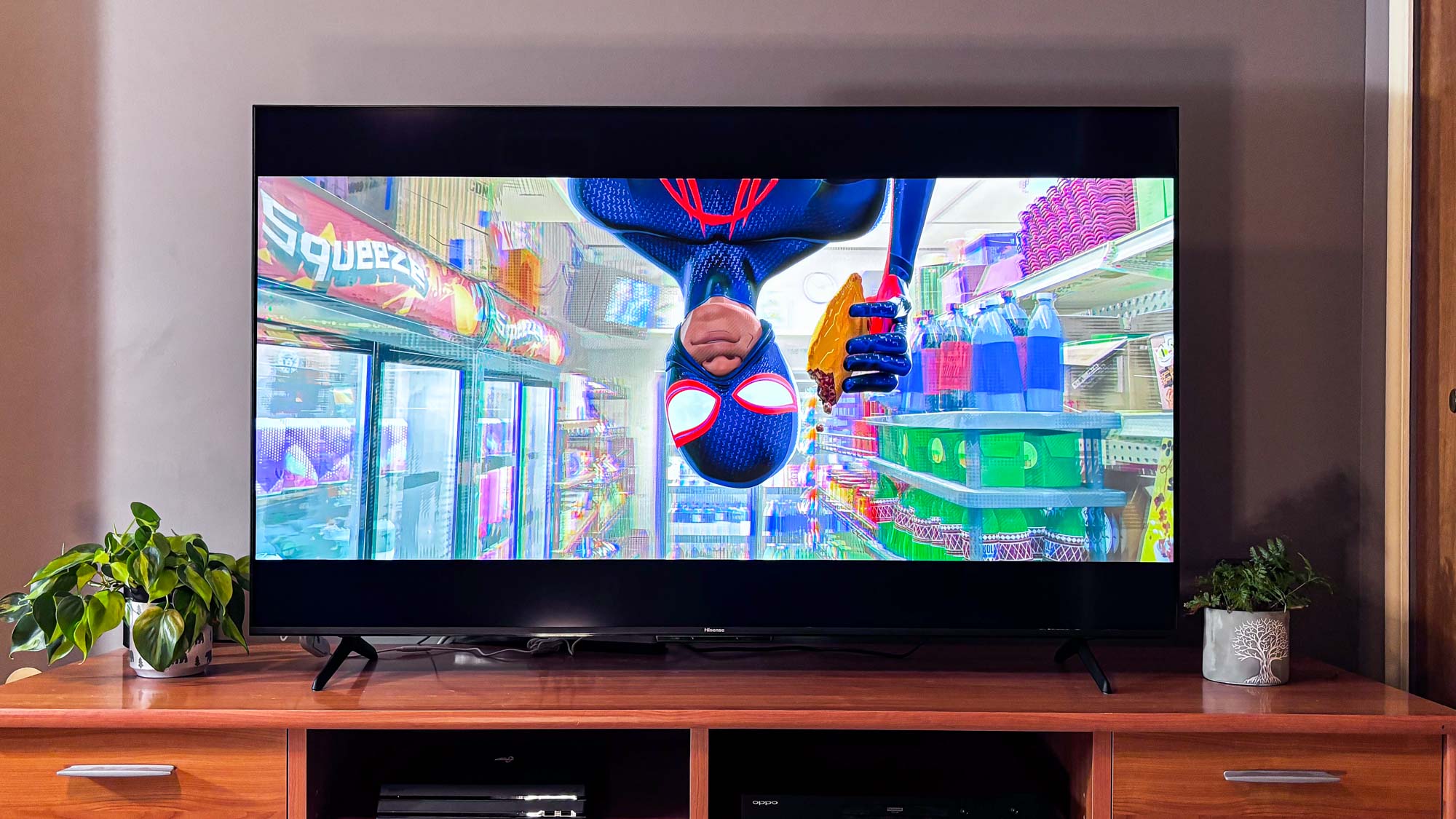
The Hisense U6 isn’t only good with bright highlights — its black level details are also surprisingly good. That’s due again to the Mini-LED backlighting that can create highly defined zones of lighting. It doesn’t do complete black the same way an OLED TV can, but the U6’s Mini-LED panel allows it to put dark shadows next to bright highlights without noticeable haloing that you’d notice on other low-end models.
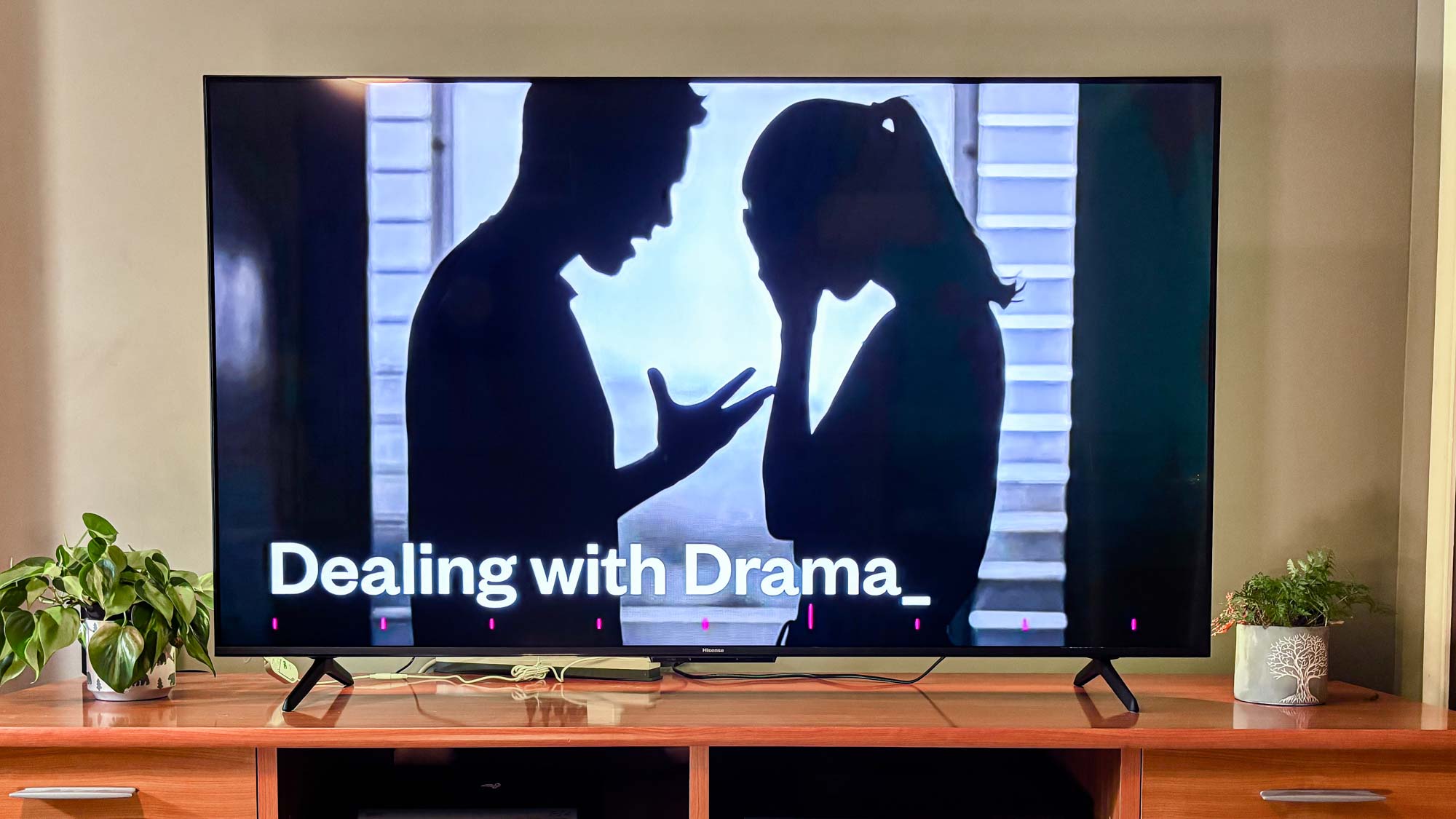
That said, like most budget models, HD/SDR content isn’t wonderful on the Hisense U6. Upscaling can be hit-or-miss with some real fuzziness around faces, while color saturation and accuracy can be a bit lacking. If you want a TV for watching cable or over-the-air content, you’ll probably want to step up to a model with a higher-end processor on-board.
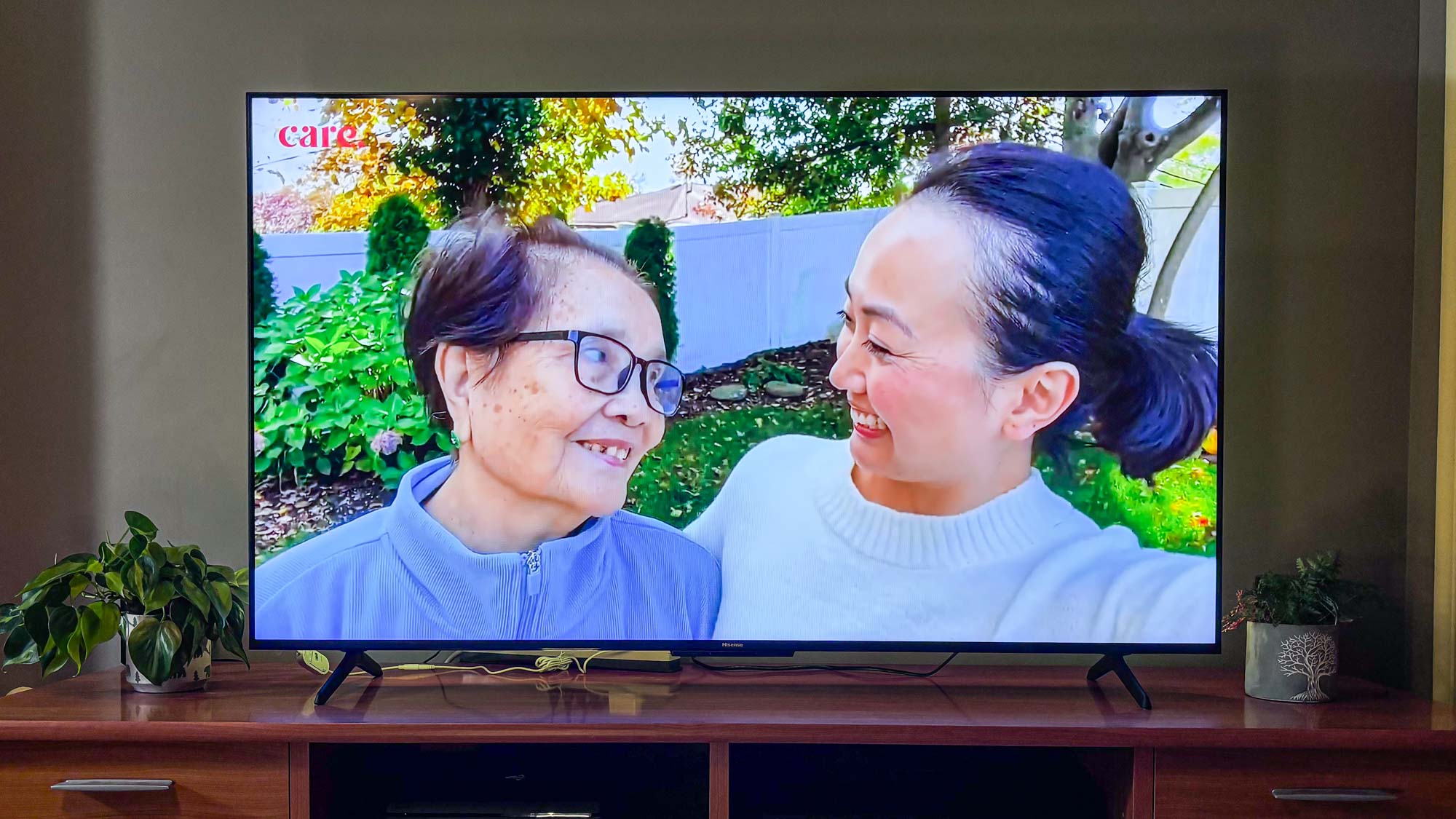
Because this is still an LCD TV — albeit one with a great backlighting system — you’re going to notice that colors will desaturate and shift as you move off-axis. There’s a little leniency here (probably of about 30 degrees) to play around with, but I wouldn’t recommend sitting too far to one side of the screen as the colors will begin to fade and look unnatural.
Overall, however, the U6’s picture performance is still far above what I’ve seen from Insignia, Amazon and Vizio TVs that cost around the same amount. The better brightness, as you’ll see in our test results section, coupled with the improved contrast provided by the Mini-LED panel helps to elevate the U6 above its station. It was a TV that I was all too happy to watch in my office over the month-long period of testing.
Hisense U6K review: Test results
Our test results — conducted using an X-Rite i1 Pro spectrophotometer, a SpectraCal VideoForge Pro pattern generator, and Portrait Displays’ Calman calibration software — confirmed what I saw during my hands-on testing.
The Hisense’s use of Mini-LED lighting made it brighter than any other budget TV model on the market, while Hisense’s implementation of quantum dot produced nicely saturated colors. In nearly every metric, the U6 outperformed all of its competition.
I want to call extra attention to HDR brightness, however, as that’s where I spent a lot of time with the U6. With a peak brightness of 525 nits, brightly lit areas of the screen had a nice pop compared to darker areas. I saw this time and time again in Spider-Man: Across the Spider-Verse and in Cyberpunk 2077 on Xbox Series X.
Admittedly, the color accuracy (measured by the Delta E value where lower is better) leaves a little to be desired and can be a little off putting if you don’t go in and tweak it. You’ll get better out-of-the-box color accuracy with both the Samsung Q60C and Samsung CU8000, but you’ll be making sacrifices in brightness and contrast to get it.
Of all the TVs we tested in this price bracket, the Sony X75L was the least competitive, losing in every metric except color accuracy and input lag. The color accuracy will be noticeable as it’s a relatively large difference, but the .5ms in latency will be almost imperceptible to most gamers.
Hisense U6K review: Audio
The Hisense U6’s speakers are good for the price but aren’t going to blow you away. Dialogue will come through loud and clear, however, and you can always do some tweaking via the sound settings built into Google TV.
In terms of technical specs, the U6 uses two down-firing 10W speakers. That’s better than the 8W speakers you’d find in other cheap TV models, and the difference in sound is noticeable — the U6 can get a lot louder than you’d expect. In my TV testing room, a volume level of 12 was perfect while in a larger space a level of 20 or 22 got the job done.
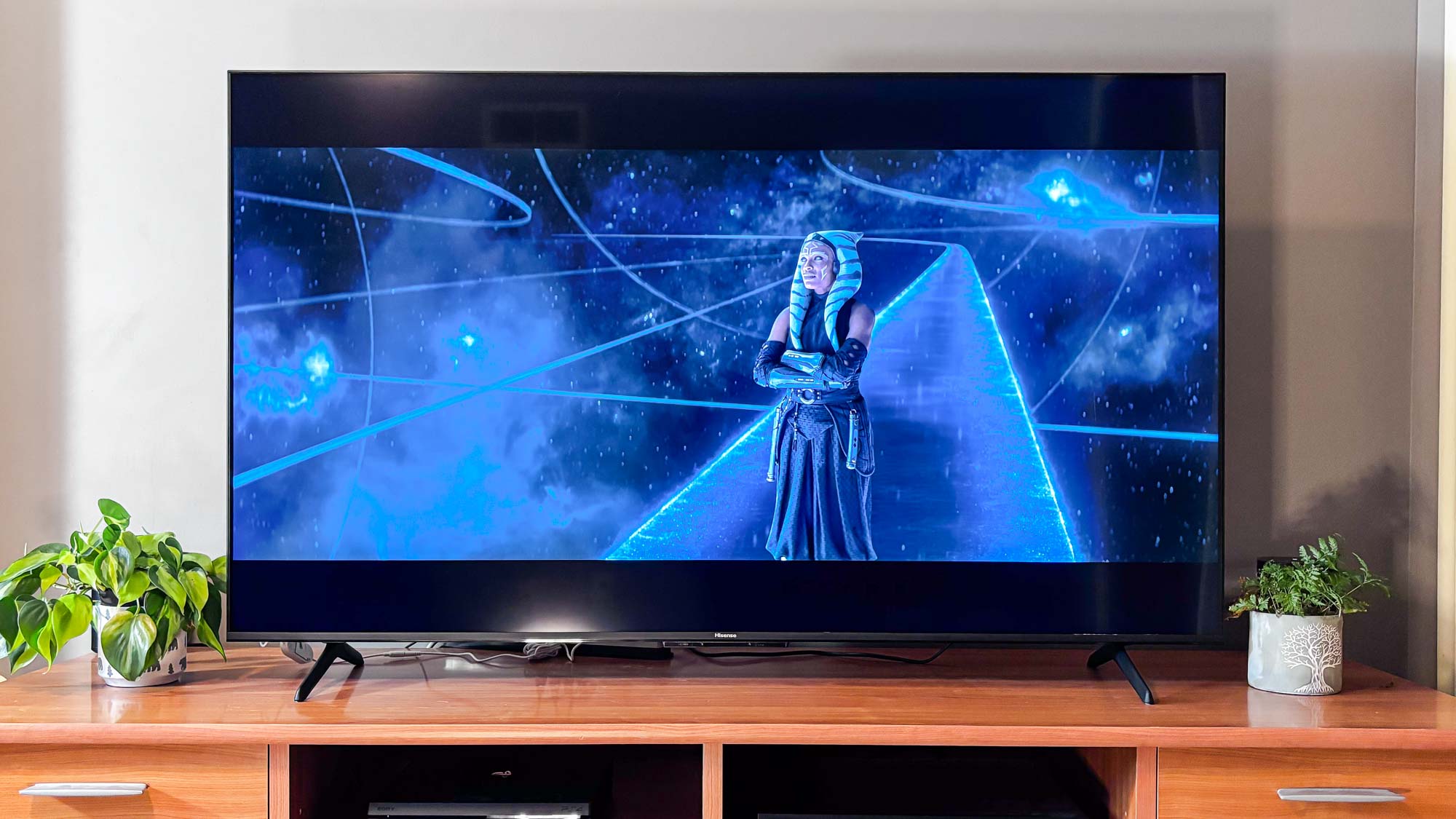
The only weak part of the Hisense U6’s audio performance is its bass response. You’ll be able to hear some of the lower register in voices and sound effects, but that booming mid-bass and rib-shaking sub-bass are completely absent here.
Again, in a TV this price that’s more or less expected and I think you’ll be able to get by without a soundbar for a while if you don’t have money for both a TV and a sound system.
Hisense U6K review: Gaming
So bad news first: Without a 120Hz native panel and no HDMI 2.1 ports on board, 4K/120 frames-per-second gameplay is off the table. But don’t count the U6 out yet because the features it does offer — like VRR and auto low-latency mode — make it a very compelling choice for gamers on a budget.
To put the Hisense U6 through its paces, I played a lot of Cyberpunk 2077’s Phantom Liberty DLC on Xbox Series X, chosen because I thought the U6’s Mini-LED lighting could make the game really pop — and I was right.
Night City looked gorgeous on the U6K. The vibrant neon signs of the city looked wonderfully saturated and some of the more intense trance scenes became almost too bright for comfort, while the night sky and dark seedy alleys remained a nice foreboding black.
The latency wasn’t noticeable at all in Cyberpunk — but you might want to upgrade to an OLED if you’re a discerning gamer who wants the lowest input lag possible.
Hisense U6K review: Smart TV interface
The Hisense U6 uses Google TV — one of the better smart platforms available on the market and one that offers a lot of personalized content if you don’t mind Google monitoring your viewing habits.
While it looks exactly the same here as it does on upper-end models, Google TV does run a bit more…erratic on the Hisense U6. There were a few moments when there’d be a delay when jumping from one app to another and times when I’d select something on Amazon Prime Video that Google TV would take me back to Disney Plus.
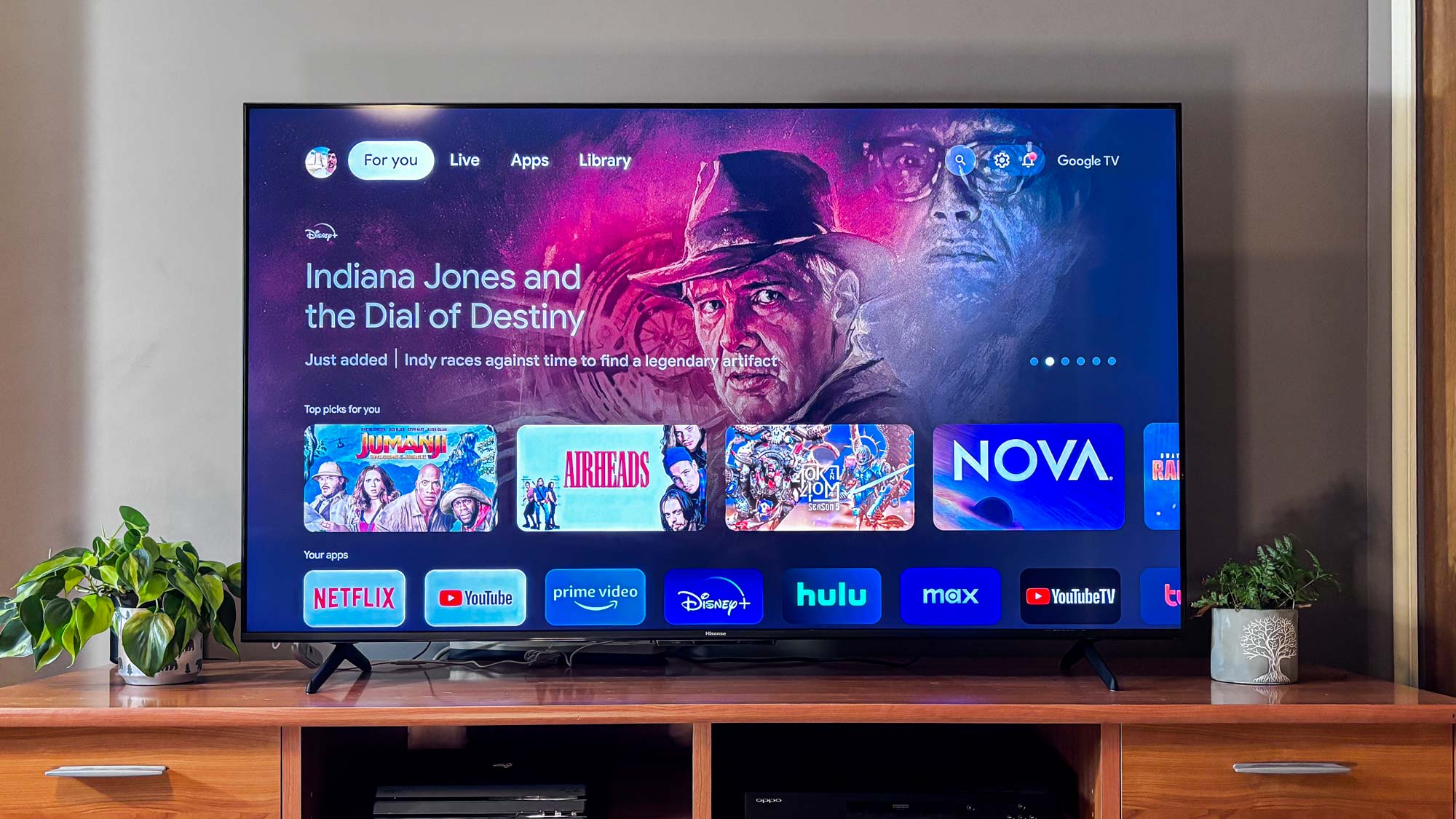
I’m expecting that the slowdowns and hiccups are common for the U6, but I wouldn’t expect anyone else to experience the multi-app shenanigans that happened to me.
Like other Google TVs the Hisense U6 supports Apple AirPlay and Google Chromecast, which is nice if you have friends over and they want to share videos from their phone, too.
Hisense U6K review: Remote
Some things change and others stay exactly the same, like Hisense’s remote. The all-plastic model that ships with the Hisense U6 is the same one we’ve seen for several generations. As far as I can tell, it’s literally the exact same one that shipped with last year’s model.
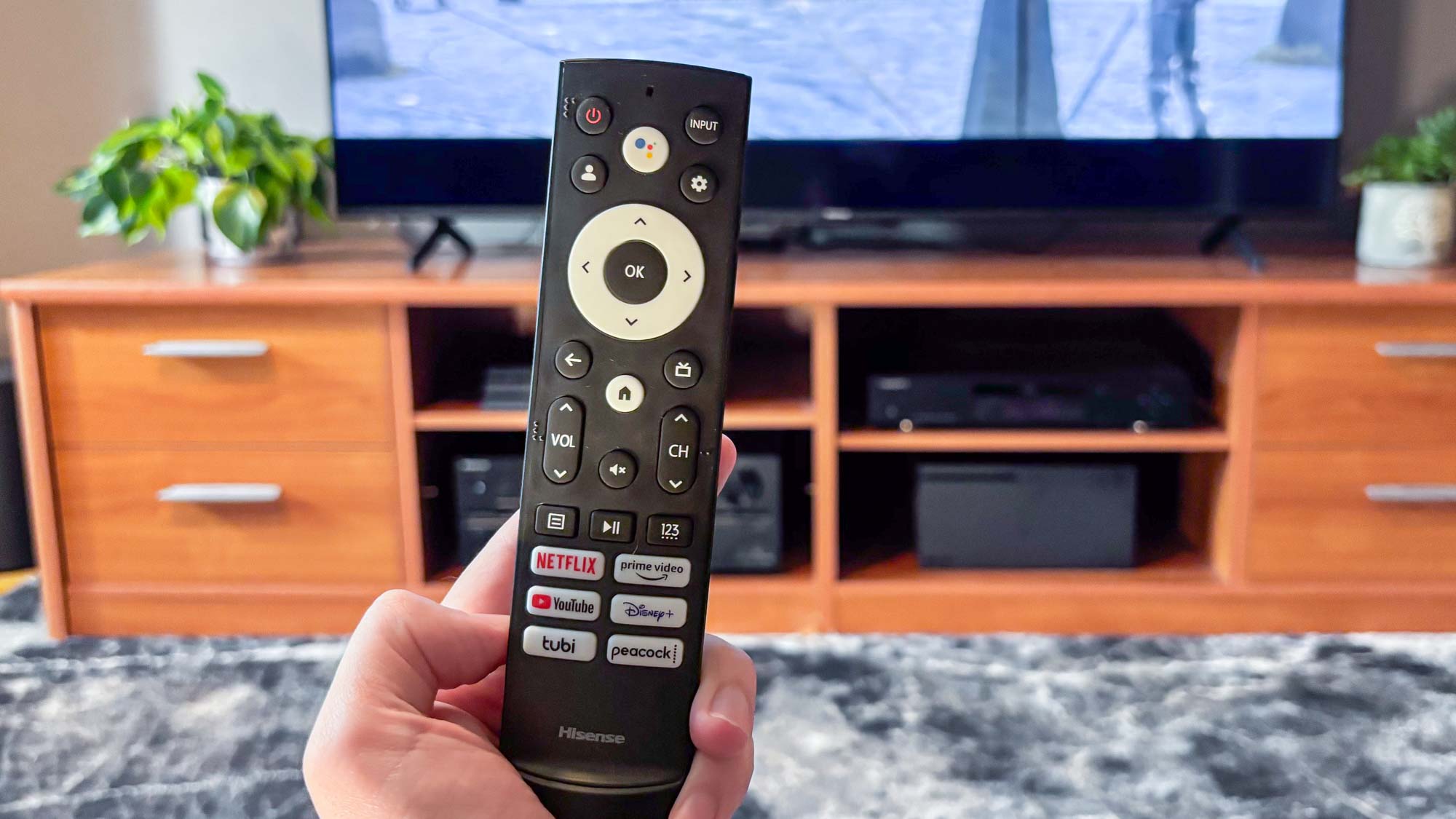
Instead of finding new ways to say the same thing, here’s what we said about the remote last year: From top to bottom, the buttons are Power, Input, Google Assistant, Account (for switching to a different Google profile), Settings, a five-way directional pad, Back, TV, Home, Volume and Channel controls, Mute, Menu, Play/Pause, and Numbers and Colors. Below the final row is a collection of six dedicated shortcut buttons for accessing various streaming services: Netflix, Amazon Prime Video, YouTube, Disney+, Tubi, and Peacock.
These buttons, Home, the circular directional pad, and Google Assistant are all in white, so they stand out attractively against the solid black of everything else. Speaking of standing: If you don’t want to lay the 6.6-inch-long remote down flat, its flared bottom lets you prop it up vertically. This clever bit of design may make it harder to misplace your remote.
Hisense U6K review: Verdict
It’s not perfect, but Hisense has done well to improve on last year’s Hisense U6H model. The addition of a Mini-LED backlight system has resulted in much better brightness and contrast and a lower likelihood of the dreaded Dirty Screen Effect from non-uniform lighting elements. These are all huge wins in my book.
The fact that you can get all those improvements for the same price as last year’s model is what absolutely floors me, though. We liked the Hisense U6H enough to give it a 4 out of 5, so the Hisense U6K — with all these new features — feels like a marked improvement.
If you’re someone who needs the absolute lowest latency or color accuracy out of the box, you’ll be better off spending a bit more money for a higher end model like the LG C3 OLED. But, if you want the best bang for your buck, the Hisense U6K can’t be beat.







